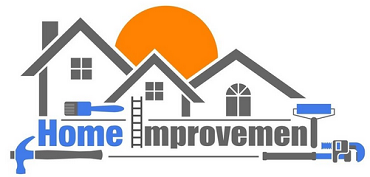Pest Control Innovations: How Technology is Revolutionizing the Battle against Bugs

Humans and unwelcome insects have been engaged in a constant war of pest management for ages. Our techniques have advanced throughout time, moving from the use of crude traps and organic deterrents to the use of chemical pesticides. But as technology has advanced, new pest management advancements have appeared, revolutionizing how we deal with these troublesome trespassers.
In this blog, we’ll examine the cutting-edge pest control services and technologies that are transforming both home and agricultural pest management.
IoT Devices and Smart Pest Management Systems
Nearly every area of contemporary life has been impacted by the Internet of Things (IoT), and pest management is no exception. Smart pest management systems that can monitor, identify, and respond to pest concerns in real-time have been made possible by IoT devices. These systems collect information on pest activity, temperature, humidity, and other environmental conditions using sensors and cameras.
Advanced algorithms are then used to examine the acquired data in order to find trends and possible infestations. On their cellphones, specialists of residential and commercial pest control services and homeowners may get alerts and reports, enabling them to take prompt action and stop the issue from getting worse.
Drones for Precision Agriculture and Pest Control
Drones are becoming crucial instruments in the field of agricultural pest management. Drones may fly over fields and orchards to gather information on crop health and pest infestations using high-resolution cameras and sensors. Using less pesticides is necessary because to the utilization of this data, which enables farmers to discover problem regions early on and treat just those areas that require it.
Some highly developed drones may even release helpful insects like ladybugs or parasitic wasps where they are most required to control detrimental pests. This strategy, known as biocontrol, supports organic pest control and is beneficial to the environment. You can pick this method by searching “residential or commercial pest control services near me.”
Biologically-Based Pest Control Solutions
The development of pest control methods based on biology is a result of people being more conscious of the negative effects that conventional chemical pesticides have on the environment. To reduce insect populations, these solutions make use of nature’s natural defense systems. Pheromone traps, for instance, attract and capture insects by imitating the natural odors they release, upsetting their mating cycles and lowering their population.
The use of biopesticides—pesticides made from naturally occurring microbes or plants—is growing. These chemicals have a very narrow target range, avoiding beneficial insects and lowering the possibility of chemical resistance. It can work great for dealing with termites, so when you are searching for “termite pest control near me,” make sure to pick an agency that offers such solutions.
Heat Treatment and Infrared Technology
Pests like bed bugs and termites may now be eliminated using a safe and efficient procedure called heat treatment. Without the use of chemicals, specialized equipment elevates the temperature in affected regions to fatal levels, killing bugs and their eggs. This method is especially helpful in residential and commercial settings where standard pesticides might not be feasible owing to safety considerations or issues with resistance.
Heat treatment is complemented by infrared technology, which can find pest activity behind walls and in other hidden spaces. Infrared cameras can detect temperature changes brought on by bugs, enabling pest control specialists to precisely focus their treatments.
AI and Machine Learning for Pest Prediction
Machine learning techniques and artificial intelligence (AI) have shown considerable potential in forecasting insect outbreaks and infestations. AI is able to predict possible insect issues and give early warnings to farmers and pest management specialists by evaluating enormous quantities of data, including weather patterns, past pest activity, and ecological variables.
The need for reactive, last-minute pest management treatments is diminished because to this proactive strategy, which equips stakeholders to take preventative action. As a consequence, AI-driven pest prediction helps experts of pest control in Columbus Ohio become more resource and sustainable.
Conclusion:
A new age in the fight against bugs has begun thanks to technological advances in pest control. The use of drones and biologically based remedies, as well as IoT devices and smart pest management systems, has completely changed how we approach pest control.
These developments support ecologically benign and sustainable techniques while also enhancing the efficacy of pest management. We may anticipate even more complex solutions to come into existence as technology develops, giving us greater strength in the continuous war against pests. Adopting these technologies will safeguard not only our buildings, farms, and commercial enterprises but also the fragile environmental balance.







